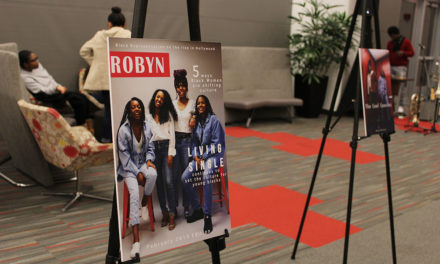DeErricka Green | Managing Editor
Spike Lee is much more than that quirky courtside Knicks fan, always dressed head-to-toe in team colors. 
Lee has been classified by many as the most important and controversial African American filmmaker in American history; ironically, though his political and social commentary is just as relevant today as it was in the 1980s, a startling fraction of our current generation is unaware of this, something a group of Durham educators is working to change.
The Liberty Arts and the Durham Art Guild will be sponsoring 40 Acres & a Mule, a film series that kicked off March 16 and will continue with weekly screenings of Spike Lee “joints” through April 13.
With guest speakers (including Dr. Mark Anthony Neal, a professor of African and African-American Studies at Duke University, @The BlackVoice’s Taurean R. Brown, and activist Lamont Lilly) the series will dissect such classics as School Daze and Do the Right Thing in order to celebrate Lee and examine race relations, colorism in the black community, the role of media in contemporary life, urban crime and poverty, and their enduring affects on black culture.
Since his first film She Gotta Have It in the mid-1980s, Lee has capitalized on the art of filmmaking in order to articulate issues of race, class and the disparaging conditions of the black population in America.
As Lee became better known and his work followed more closely, he began to use his public influence and status in order to become an agent for empowerment amongst black people, ultimately becoming a voice for the voiceless.
After the release of Mo’ Better Blues (1990), Lee was accused of anti-semitism by critics. They criticized two characters within the film for stereotypical “Jewish” behavior. Lee denied the charge, explaining that he devised those characters in order to depict how black artists struggled against exploitation.
In 2005, Lee commented on the federal government’s response to Hurricane Katrina. Responding to a CNN anchor’s question as to whether the government intentionally ignored the predicaments of African Americans during the disaster, Lee said, “I don’t put anything past the United States government. I don’t find it too far-fetched that they tried to displace all the black people out of New Orleans.” Lee also cited the government’s past atrocities against black people, including the Tuskegee Study of Untreated Syphilis in the Negro Male.
During a lecture at Concordia University in Montreal, Canada in 2009, Lee criticized how some individuals within the black community wrongfully associate “intelligence with acting white, and ignorance with acting black.”
Today, Lee is not only regarded as the most important African American filmmaker, but definitely the most commercially successful. In addition to awards, box office success and his own production company, Lee inspired a movement of black film through the 1990s and today. Without the influence of Lee’s cinematography, artists like John Singleton and the Hughes Brothers, classics like
Menace II Society and Boyz n the Hood, would be non-existent.
In hosting the 40 Acres & a Mule, Liberty Arts and the Durham Art Guild will celebrate the work of an innovator who has, since his debut dedicated his life to the empowerment of African Americans through film and cinematography. The Lee films have analyzed for the larger historical, cultural, and social aspects of American society in a way that made a lasting impact on African American culture.







The question I would ask is do he feels he’s compelled to help burgeoning African American Screenwriters and actors get a toe-hold?